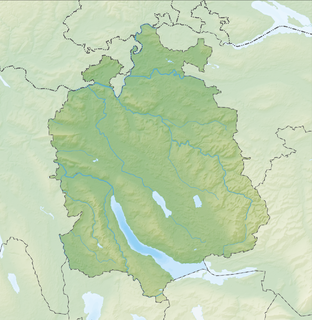Related Research Articles

EUR is a residential and business district in Rome, Italy, part of the Municipio IX.

Salò is a town and comune in the Province of Brescia in the region of Lombardy on the banks of Lake Garda, on which it has the longest promenade. The city was the seat of government of the Italian Social Republic from 1943 to 1945, with the ISR often being referred to as the "Salò Republic".

Paolo Farinati was an Italian painter of the Mannerist style, active in mainly in his native Verona, but also in Mantua and Venice.

Prato is a city and comune in Tuscany, Italy, the capital of the Province of Prato. The city lies 17 kilometres north-west of Florence, at the foot of Monte Retaia, elevation 768 metres (2,520 ft), the last peak in the Calvana chain. With more than 195,000 inhabitants, Prato is Tuscany's second largest city and the third largest in Central Italy.

Lanciano is a town and comune in the province of Chieti, part of the Abruzzo region of central Italy. It has 36,304 inhabitants as of 2011. The town is known for the first recorded Catholic Eucharistic Miracle.

Liceo scientifico is a type of secondary school in Italy. It is designed to give students the skills to progress to any university or higher educational institution. Students can attend the liceo scientifico after successfully completing middle school.

The German School of Milan, founded in 1886, is an international institution located in Milan, Italy.

Liceo classico is the oldest, public secondary school type in Italy. Its educational curriculum spans over five years, when students are generally about 14 to 19 years of age.

The Giusti Palace and Garden are located in the east of Verona, Italy, a short distance from Piazza Isolo and near the city centre. The palace was built in the sixteenth century. The garden is considered one of the finest examples of an Italian garden.
Istituto Messedaglia, officially called "Liceo Scientifico Angelo Messedaglia", is one of the oldest schools in Verona, Veneto, North Italy. It is a scientific school, with students who focus on the scientific subjects and can choose different paths: traditional, PNI or languages.

Villa Rusciano is a historic villa in the neighbourhood of Florence, central Italy, which includes work by Brunelleschi.

San Giorgio in Braida is a Roman Catholic church in Verona, region of Veneto, Italy. A church titled San Giacomo in Braida, was located in Cremona, and became superseded by Sant'Agostino.

Liceo Ginnasio statale "Camillo Benso di Cavour" is the oldest Liceo classico in Turin and one among the oldest and most prominent high schools in Italy, for pupils aged 14 to 19. It was transferred to its present location in 1931.
The Palazzo Contarini-Sceriman, also called Palazzo Seriman ai Gesuiti is a 14th-century palace in the Sestiere of Cannaregio of Venice, Italy. It is located near the church of the Gesuiti.
The Palazzo Miniscalchi, adjacent to the 19th-century, Neoclassic style Palazzo Miniscalchi-Erizzo located on via Garibaldi, is a late-Gothic style palace with a facade on Via San Mamaso in central Verona, region of Veneto, Italy. The palace presently houses a museum and the Foundation for the Miniscalchi-Erizzo Museum. Access to the museum is through the Via San Mamaso entrance.

The Istituto Statale Italiano Leonardo Da Vinci is an Italian government-owned Italian international school in Paris, France. Its scuola media and liceo scientifico, along with the school administration, occupies one campus in the 7th arrondissement. The elementary school is housed in a different campus in the same arrondissement.

Liceo linguistico e scientifico "Pier Martire Vermigli"Italian pronunciation: [liˈtʃeːo liŋˈɡwistiko e ʃenˈtiːfiko] is a private Italian international liceo in Zürich, Switzerland. It is on the second and third floors of the "Casa d'Italia" facility, which also houses the Scuola statale primaria e dell'infanzia/Scuola Italiana di Zurigo, a primary school operated by the Italian government; and the Scuola media paritaria "Enrico Fermi", which is a private Italian lower secondary school.

The Palazzo Pisani a Santo Stefano is a large palace located facing Campo Santo Stefano, in an alley near the facade of the church of San Vidal, in the sestiere of San Marco, in the city of Venice, Italy. The palace is owned by the city and now houses the Conservatorio di Musica Benedetto Marcello di Venezia, founded in 1876.

The Liceo scientifico statale Camillo Cavour is a liceo scientifico located in Rome, in via delle Carine 1, in Rione Monti. It was the first scientific high school in Rome, and potentially in the whole of Italy.
References
- ↑ Scientifico Statale "Angelo Messedaglia" Archived 2014-12-13 at the Wayback Machine official site.
- ↑ A Handbook for Travellers in Northern Italy; by John Murray (Firm), page 270.